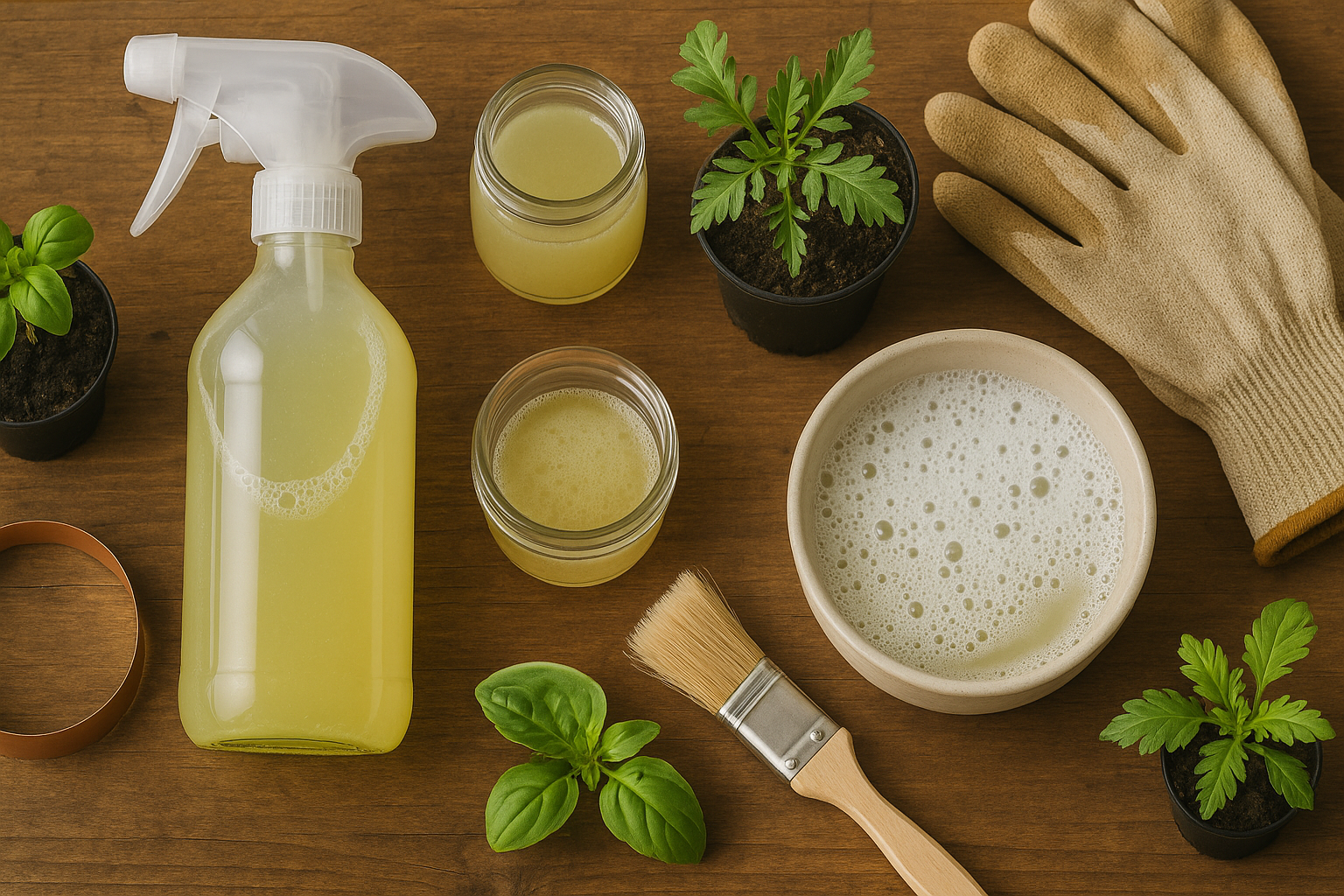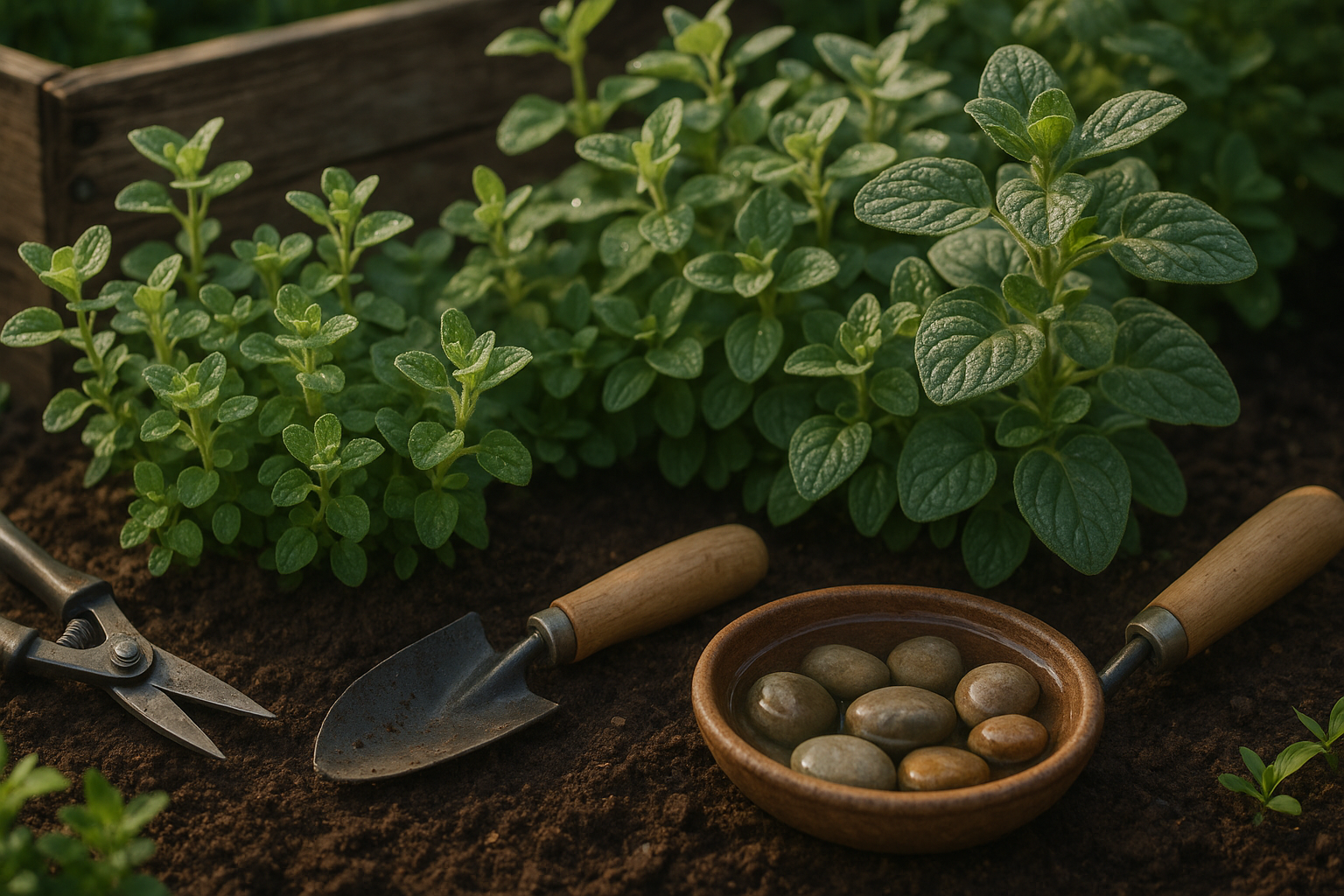Introduction
Marjoram and oregano are beloved staples in both home kitchens and herb gardens, prized for their aromatic leaves and the fresh flavor they bring to countless recipes. But like every gardener’s favorite herbs, they aren’t immune to trouble—marjoram pests can quickly threaten the health and productivity of your plants. From pesky aphids clinging to tender leaves to stealthy spider mites draining vitality from your stems, these unwelcome visitors, along with environmental stressors like drought or poor soil, often make maintaining lush, thriving marjoram or oregano more challenging than expected.
If you’ve noticed yellowing leaves, wilting, or suspicious webbing in your herb patch, you’re not alone. In this post, we’ll help you recognize the most common marjoram pests, highlight natural remedies and prevention strategies, and share practical tips to keep your herbs strong, healthy, and ready for the kitchen all season long.
Common Pests and Herbivores

When growing marjoram and oregano, gardeners often face challenges from a variety of pests and herbivores. Among the most common insect invaders are aphids, spider mites, and whiteflies.
Aphids are small, soft-bodied bugs that cluster on young stems and leaves, sucking out plant juices and causing leaves to yellow, curl, or develop a sticky residue known as honeydew. Spider mites, almost invisible to the naked eye, spin fine webs on the undersides of leaves and suck chlorophyll, leading to dusty, stippled foliage and premature leaf drop. Whiteflies appear as tiny, white, moth-like insects that flutter around when disturbed; they weaken plants by feeding on sap and also leave behind honeydew, which can encourage mold growth.
Caterpillars from moth or butterfly larvae can also chew irregular holes in leaves, while beetles and their larvae might skeletonize foliage. Slugs and snails are another concern, especially in damp conditions—they create ragged holes in leaves and may leave behind shiny, slimy trails. Beyond insects, small mammals like rabbits and deer sometimes nibble on young oregano and marjoram plants, snapping off tender shoots and reducing growth.
Identifying and Managing Pests
To identify pests early, regularly inspect leaves (especially undersides), stems, and soil for bugs, webbing, eggs, or sticky residue. Wilting, yellowing, or stunted plants can also signal trouble.
Out of all these threats, aphids and spider mites are typically the most damaging because they reproduce quickly and weaken plants over time, often going unnoticed until infestations are severe. For outdoor growers, deer and rabbits can cause dramatic, sudden losses; protective barriers like fencing or row covers can help.
Prompt monitoring and action—such as pinching off infested leaves, spraying with insecticidal soap, or encouraging beneficial insects like ladybugs—can keep these common pests from ruining your oregano and marjoram harvests.
Beneficial Insects and Animals
Beneficial insects and animals play a crucial role in keeping marjoram and oregano plants healthy by naturally controlling pests and promoting pollination. Ladybugs, lacewings, and hoverflies are common garden allies—these insects love snacking on aphids and other small pests that might otherwise damage your herb beds.
Bees are also attracted to the small flowers of marjoram and oregano, helping boost pollination and increasing your harvest. In addition to insects, birds like wrens and chickadees can help manage pest populations, while friendly toads and spiders act as natural pest patrols, too.
Want to encourage these helpful species? Avoid using broad-spectrum pesticides, which can harm both pests and beneficials. Plant a diverse mix of flowering herbs and keep some areas a little wild with logs or stones for toads and shelter for insects. Providing a simple water source, like a shallow dish with stones for bugs to land on, can make your garden even more inviting.
By making your herb garden a welcoming habitat, you’ll enjoy more robust oregano and marjoram, plus fewer headaches from pests.
Effective Remedies and Prevention Strategies

When dealing with common garden pests, a combination of safe remedies and smart prevention goes a long way. For immediate control, many gardeners start with simple organic solutions like neem oil spray, insecticidal soap, or a homemade mix of water and a few drops of dish soap—these are effective against aphids and mites when applied directly to affected leaves.
For more stubborn pests, targeted chemical options such as pyrethrin-based sprays can be used carefully, always following label instructions to protect beneficial insects.
Preventing pests before they take hold is just as important. Try companion planting by pairing pest-repellent herbs like basil or marigolds with your veggies to help deter unwanted bugs.
Maintaining garden hygiene—removing dead leaves, weeds, and regularly turning the soil—eliminates pest hiding spots and interrupts their life cycles.
Installing physical barriers such as floating row covers, copper tape for slugs, or netting around vulnerable crops can keep pests out without chemicals.
The best defense is early detection: inspect your plants routinely, checking the undersides of leaves for eggs or small insects. Use yellow sticky traps to monitor for flying pests, and address any signs of trouble as soon as you spot them.
Combining these remedies and prevention strategies will keep your garden healthy and pest problems manageable.
Environmental Stress and Plant Health
Marjoram and oregano are resilient herbs, but non-pest factors like drought, overwatering, and temperature extremes can significantly impact their health. Drought stress causes wilting, yellowing leaves, and stunted growth, while overwatering can lead to root rot, leaf drop, and a general lack of vigor. Extreme temperatures—either heat waves or sudden cold snaps—may cause leaf browning or curling, and in severe cases, kill off sections of the plant entirely.
To spot environmental stress, look for signs like slowed growth, droopy or discolored leaves, and a mushy stem base. Address these issues by maintaining consistent watering—let the soil dry slightly between waterings, but don’t let it become bone dry.
Both marjoram and oregano prefer well-draining soil and ample sunlight, ideally six or more hours of direct light per day. Protect them from extreme heat with afternoon shade, and guard against frost by bringing containers indoors or using row covers. Ideally, these herbs thrive in temperatures between 60–75°F (15–24°C).
By providing balanced conditions and monitoring your plants regularly, you’ll help them resist environmental stress and grow robustly throughout the season.
Seasonal Care and Special Considerations
Caring for your garden means adjusting your routine as the seasons change, since each time of year brings unique challenges and potential pests.
In spring, focus on clearing away winter debris, gently pruning damaged branches, and watching for emerging pests like aphids drawn to fresh growth. This is also the ideal time for feeding plants and applying mulch to retain moisture before the summer heat sets in.
Summer demands vigilant watering—preferably early morning or late evening to minimize evaporation—and protection from sun scorch. Keep an eye out for mites and caterpillars, which thrive in warm conditions.
During fall, remove dead foliage and harvest mature crops promptly, as lingering produce can invite rodents and fungal diseases. Monitor for slugs and mildew, especially after rain.
As winter approaches, reduce watering, wrap tender plants in burlap, and clear fallen leaves to prevent mold and shelter for pests.
Harvesting, especially in late summer and early fall, leaves plants temporarily vulnerable because open cuts and exposed stems are easy entry points for disease and insects. Applying organic fungicides or natural wound protectants right after harvest can help protect your plants until they rebound.
A little extra attention through the seasons goes a long way for a healthy, resilient garden.
Side Effects and Toxicity
When using marjoram or oregano for pest control or plant sanitation, it’s important to exercise caution. Overuse or improper application of essential oils and sprays can harm beneficial insects or leave residues on edible plants. While both herbs are generally safe in culinary amounts, concentrated oils can cause skin irritation or digestive upset if ingested in large doses.
Pets, especially cats and dogs, may be sensitive to strong essential oils; even minimal exposure can cause symptoms like drooling, vomiting, or skin rash. For people with allergies, direct contact with freshly crushed leaves or inhalation of essential oil vapors could trigger respiratory or skin reactions.
To minimize risks, always dilute essential oils, use them in well-ventilated areas, and wash any treated produce thoroughly before eating. Keeping pets away from treated areas and storing oils out of children’s reach adds an extra layer of safety.
Conclusion
Keeping your marjoram and oregano healthy means using smart strategies like regular watering, good air circulation, and checking leaves for signs of pests such as aphids or spider mites. Quick action is key; simply removing affected leaves or using a mild soap spray can make a big difference.
Consistent observation ensures you spot issues early, before they become big problems. Remember, a little attention goes a long way in herb gardening.
For more expert tips on protecting your herbs from common threats and nurturing thriving plants, check out additional resources and guides on herb care and pest management.
